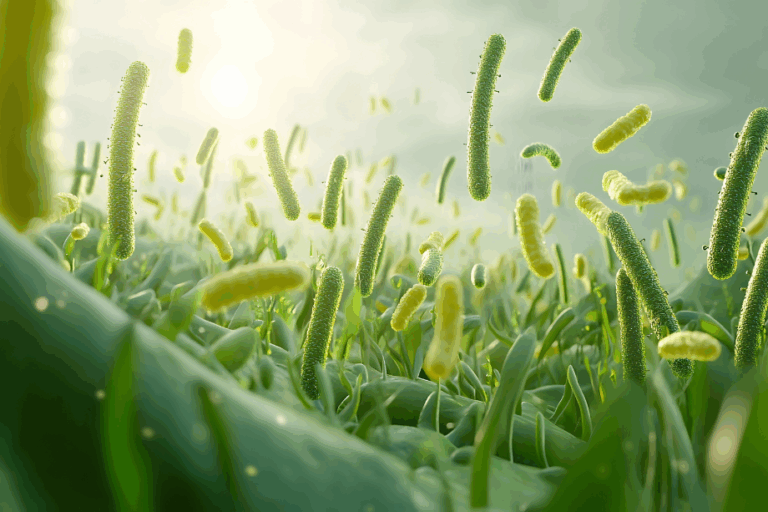Introduction
Inulin is a soluble fiber that is not absorbed in the small intestine – it’s constructed of fructose molecules linked in a way that prevents breakdown. Instead, it acts as a prebiotic, meaning it feeds beneficial bacteria (including Bifidobacteria and Lactobacilli) in the large intestine that play an important role in improving bowel and overall health. Gut bacteria convert inulin into short-chain fatty acids (SCFAs), which act as the main energy source for the cells that line your colon. SCFAs also contribute broadly to disease prevention, immune function, and good health.
The benefits of dietary inulin are well documented. Inulin has been associated with promoting microbial balance, improving weight loss (10 to 30 grams/day for 6 to 8 weeks), controlling diabetes, and relieving constipation (15 grams/day for up to 4 weeks). Studies also show that inulin may help increase calcium absorption (8 grams daily), prevent colon cancer, and treat inflammatory bowel disease.
Inulin is found most abundantly in artichokes, asparagus, chicory root, dandelion root, garlic, leeks, and onions. Adding these foods to your daily diet is Gutbliss recommended as an important way to improve your gut, and in turn, your overall health.
Be wary – not all inulin is created equal
A Washington Post article published last month tagged fiber as “the new protein” and states that inulin is being added to a lot of food products, including beverages, cereals, energy bars, protein supplements, cookies, yogurt, ice cream, and more. But this type of inulin supplementation comes at a price.
While inulin has many health benefits, if eaten in abundance, or introduced suddenly into your diet, it can cause gas, bloating, abdominal pain, frequent bowel movements, and even diarrhea. These side effects are most often observed in those who consume the supplement form of inulin in excess, as opposed to inulin naturally occurring in food, although some people do experience discomfort with whole foods containing inulin, specifically those with IBS (irritable bowel syndrome), SIBO (small intestinal bacterial overgrowth), or who have been told to go on a low FODMAPs diet (Fermentable Oligo-, Di-, Mono-saccharides And Polyols ). But remember, avoiding FODMAPs – which include inulin – is not a therapeutic solution for functional GI conditions and can actually exacerbate your condition. For more on this, read our article Low FODMAPs Diet For SIBO: Is It Worth It?. Supplementing with Oligofructose and chicory root-derived inulin have been shown to cause gas, abdominal discomfort and bloating in amounts as little as 5 to 10 grams daily. Other manufactured sources of inulin that may be problematic include high-performance (HP) inulin (shorter molecules are removed) and fructooligosaccharides (FOS).
Some studies support the use of manufactured inulin supplementation to bring about positive health outcomes, yet it’s important to remember that any processed source of fiber is exponentially inferior to the real thing. Fiber-rich, whole foods contain vitamins, minerals, antioxidants, and phytochemicals that processed powders, cereals, bars, etc, don’t. These important nutrients act together synergistically to give you the gift of disease prevention and overall better health – things that manufactured inulin can’t offer. So it’s much better to focus on incorporating whole foods containing inulin (see below) than getting your inulin from powders and fortified, processed foods.
Follow these guidelines to optimize your inulin intake
While our prehistoric ancestors most likely consumed around 135 grams of inulin daily, health benefits are observed in levels as low as 8 to 10 grams daily. See the list below, which specifies the average amount of inulin per 100 grams of inulin-rich foods:
- Jerusalem artichoke (31 grams)
- Asparagus (2.5 grams)
- Chicory root (42 grams)
- Dandelion greens (25 grams)
- Garlic (13 grams)
- Leeks (6.5 grams)
- Onions (4.3 grams)
While we don’t recommend counting fiber grams every day, it may be beneficial to gather a count of how much whole food inulin and other fibers you currently consume, then look to add a few grams every couple of weeks until you reach your desired intake. As you increase your intake, be sure to drink plenty of water to keep things moving through your GI tract.
If your goal is to consume 10 grams of inulin daily, be sure to meet the rest of your fiber needs (shoot for 30+ grams daily overall), and make a point to include those foods rich in resistant starches as well, such as green bananas, green peas, lentils, uncooked rolled oats, and white beans. Like inulin, resistant starch isn’t digested and absorbed in the GI tract, but instead stays intact until it enters the colon where it acts as food for beneficial gut bacteria and plays a key role in balancing your gut microbiome for better health.







